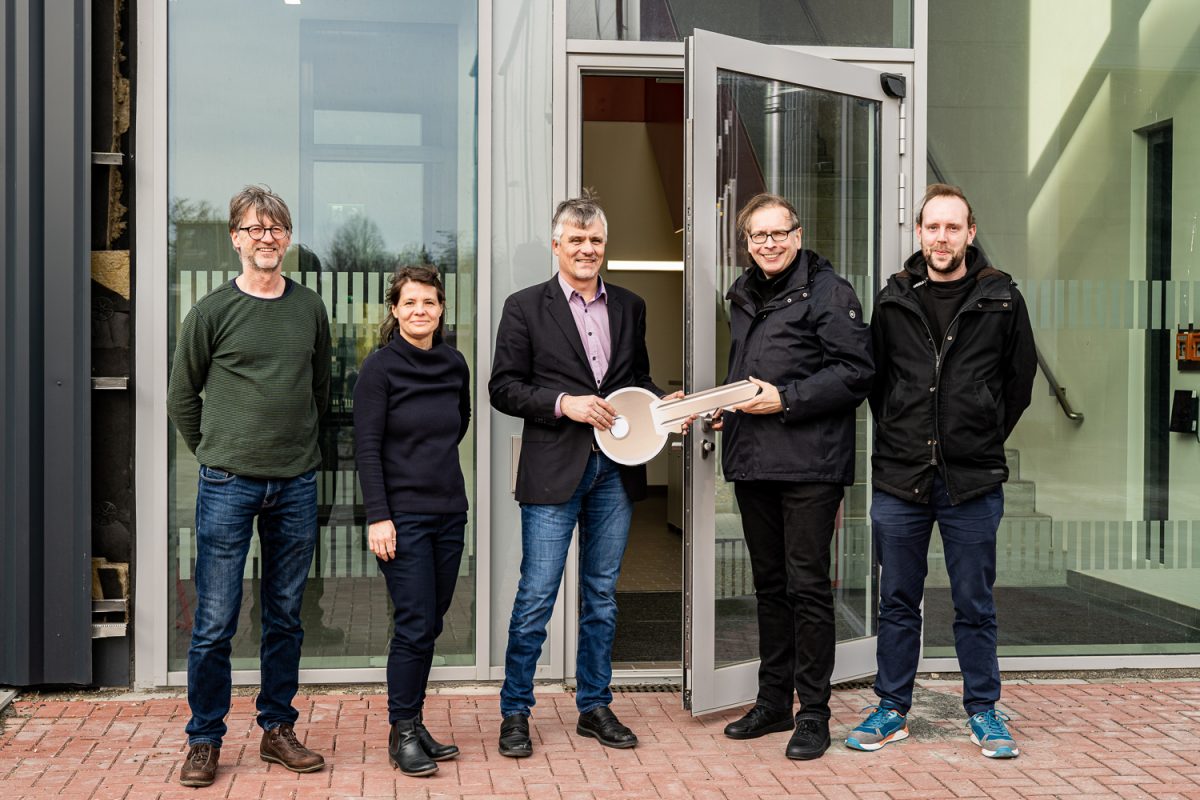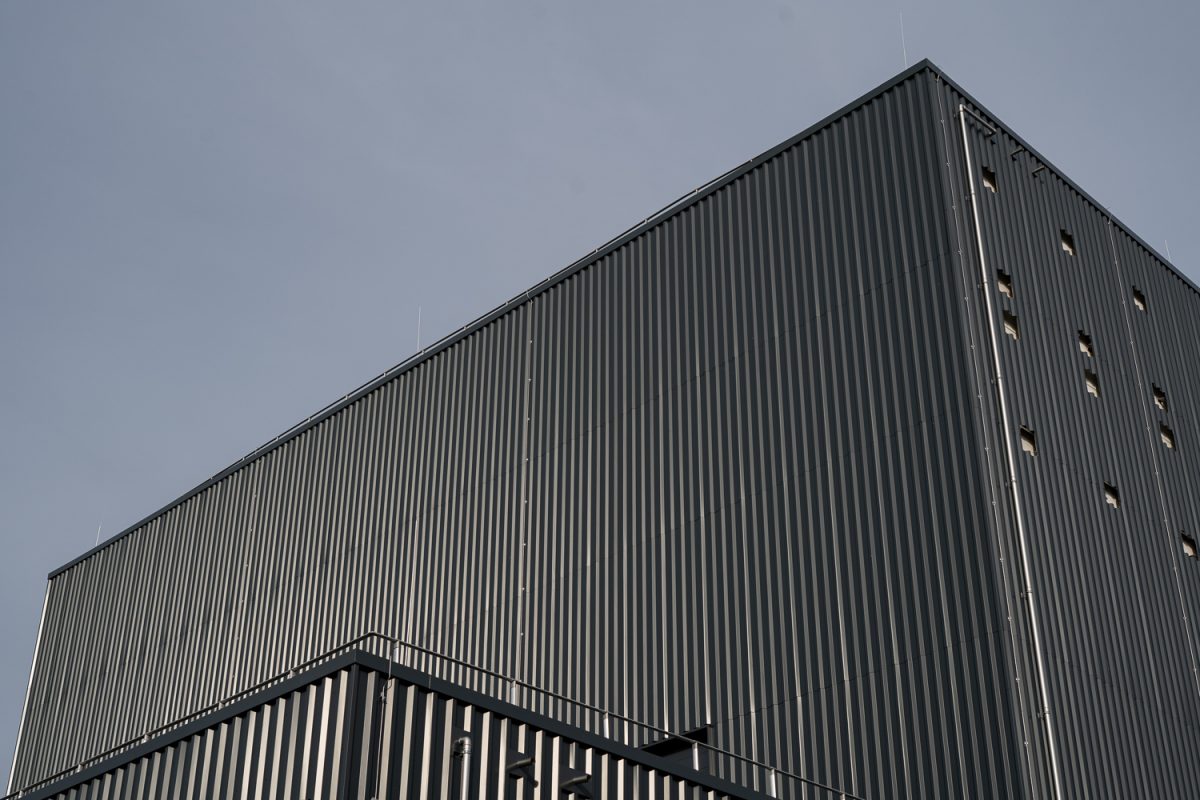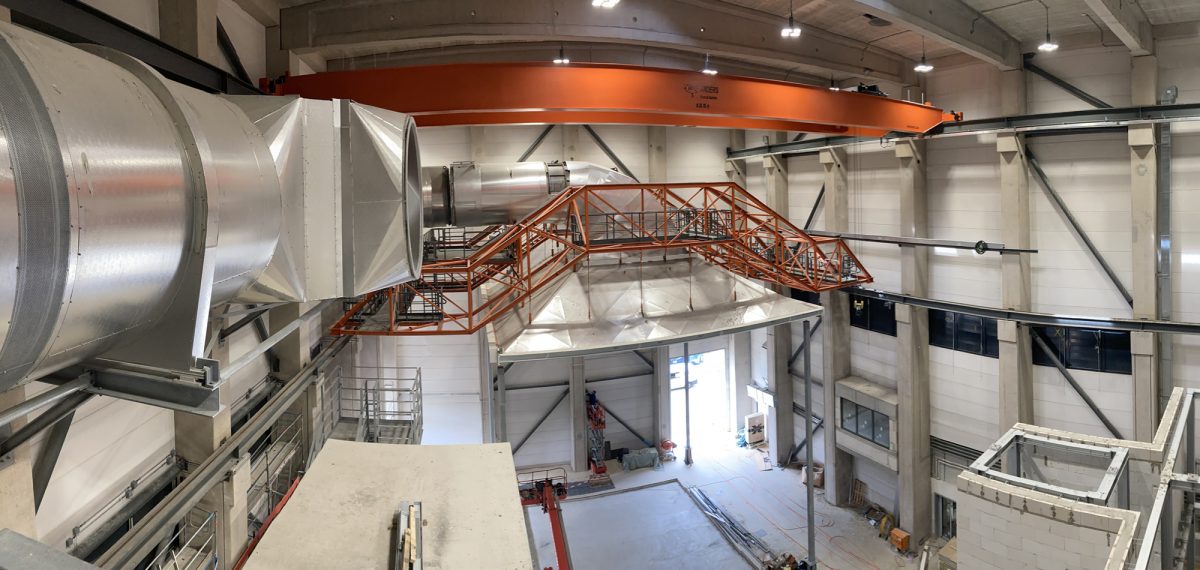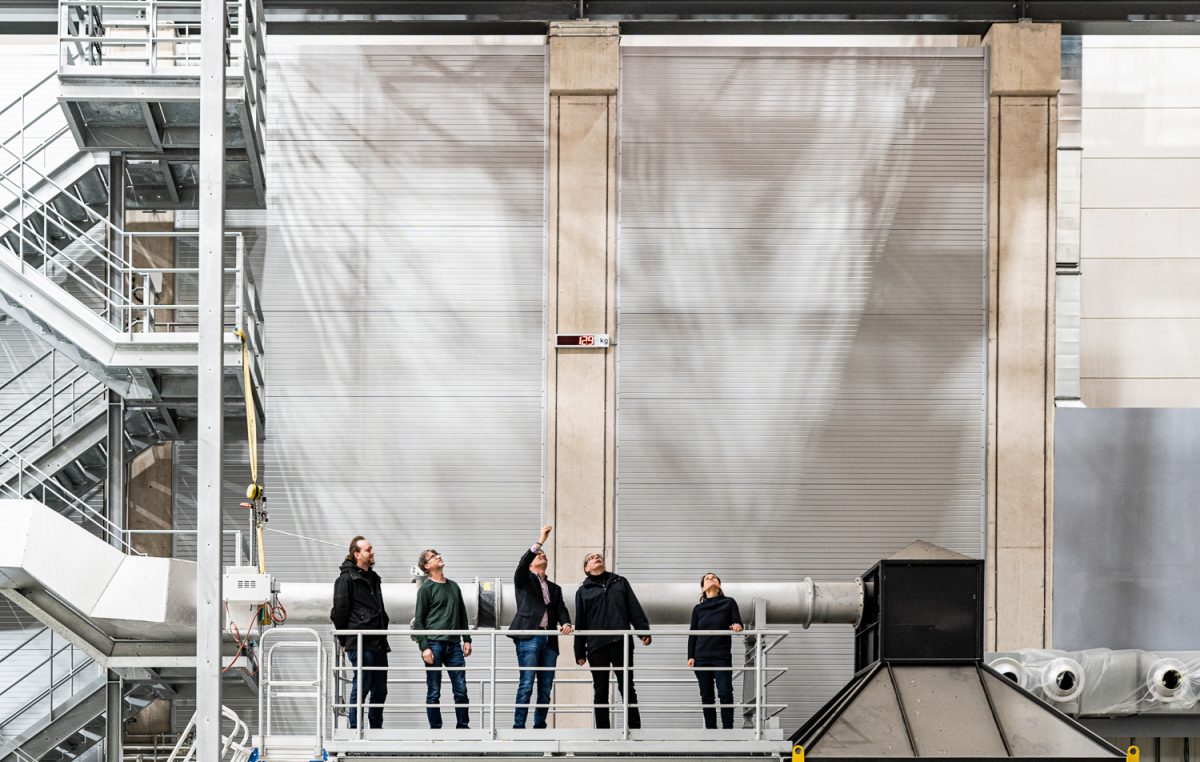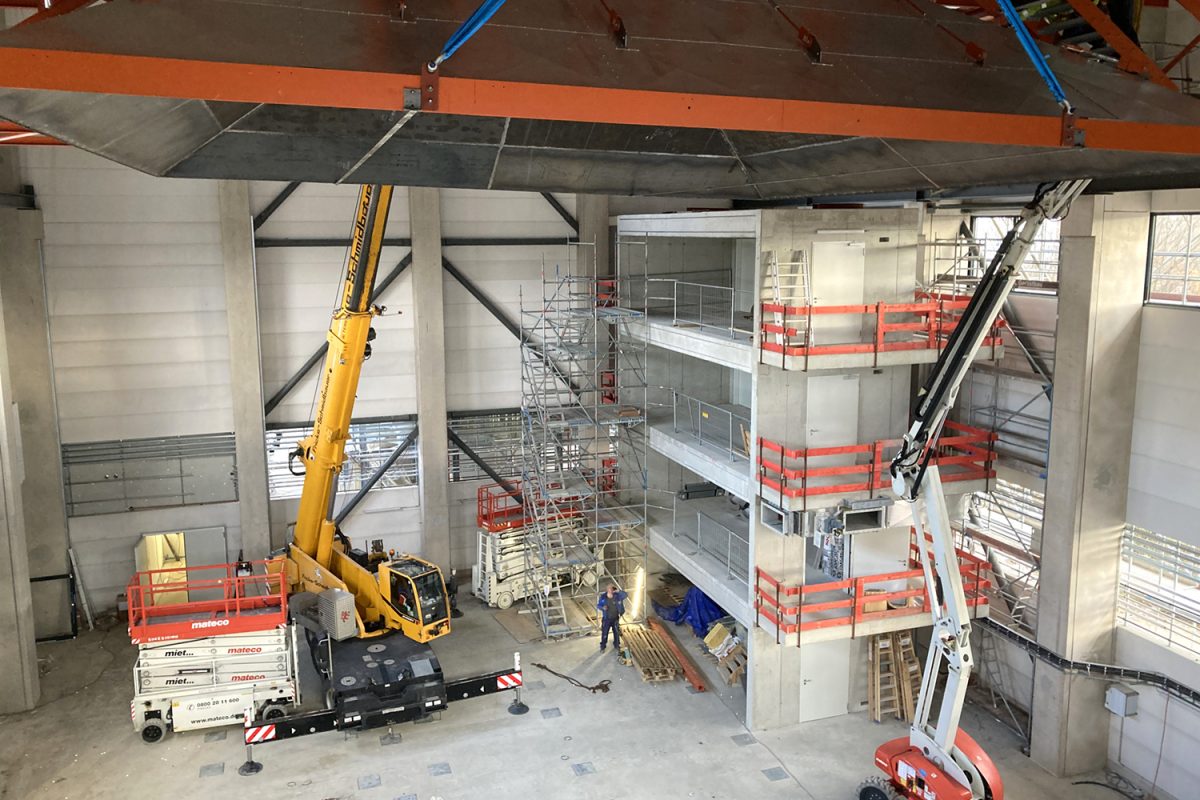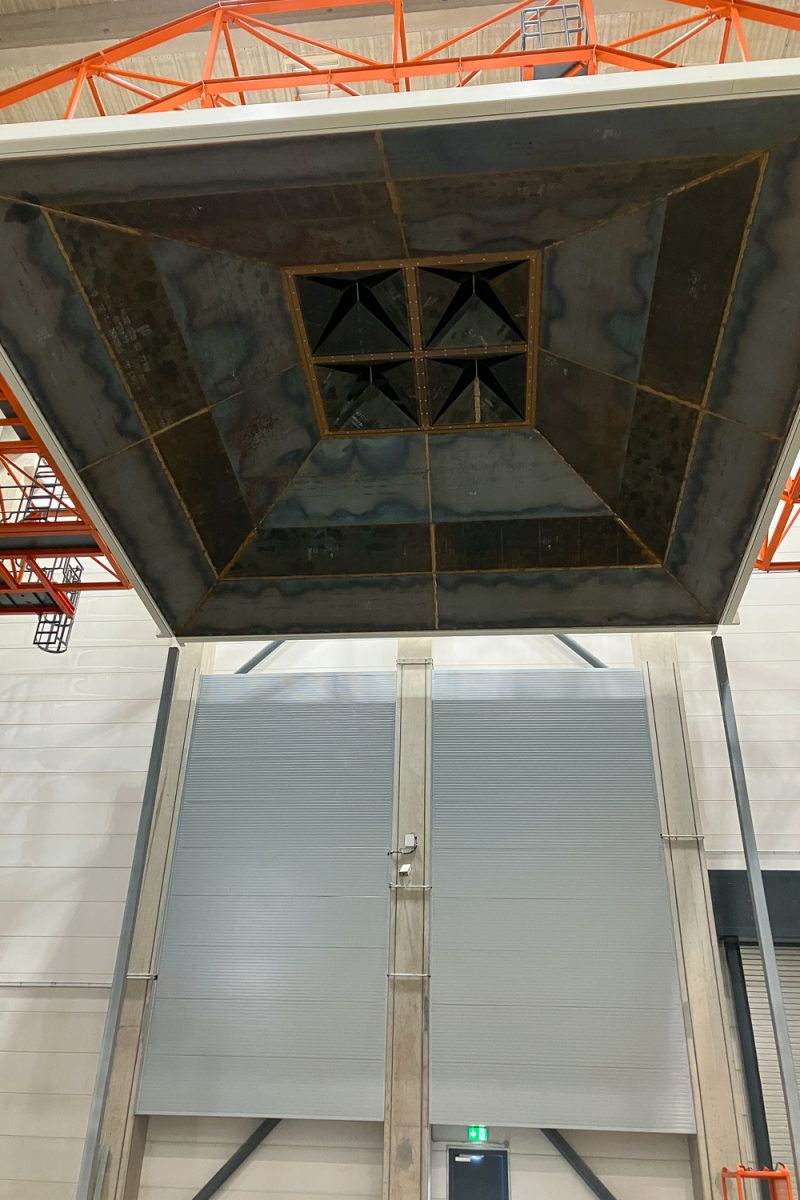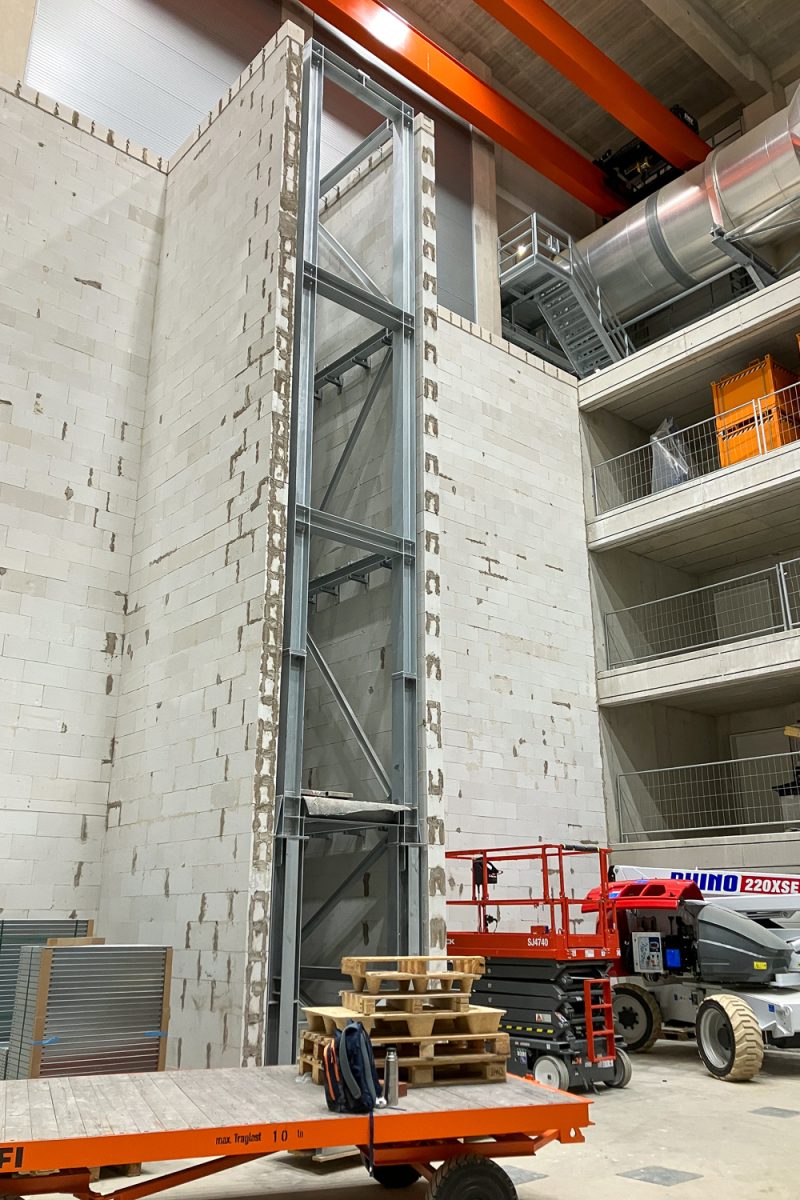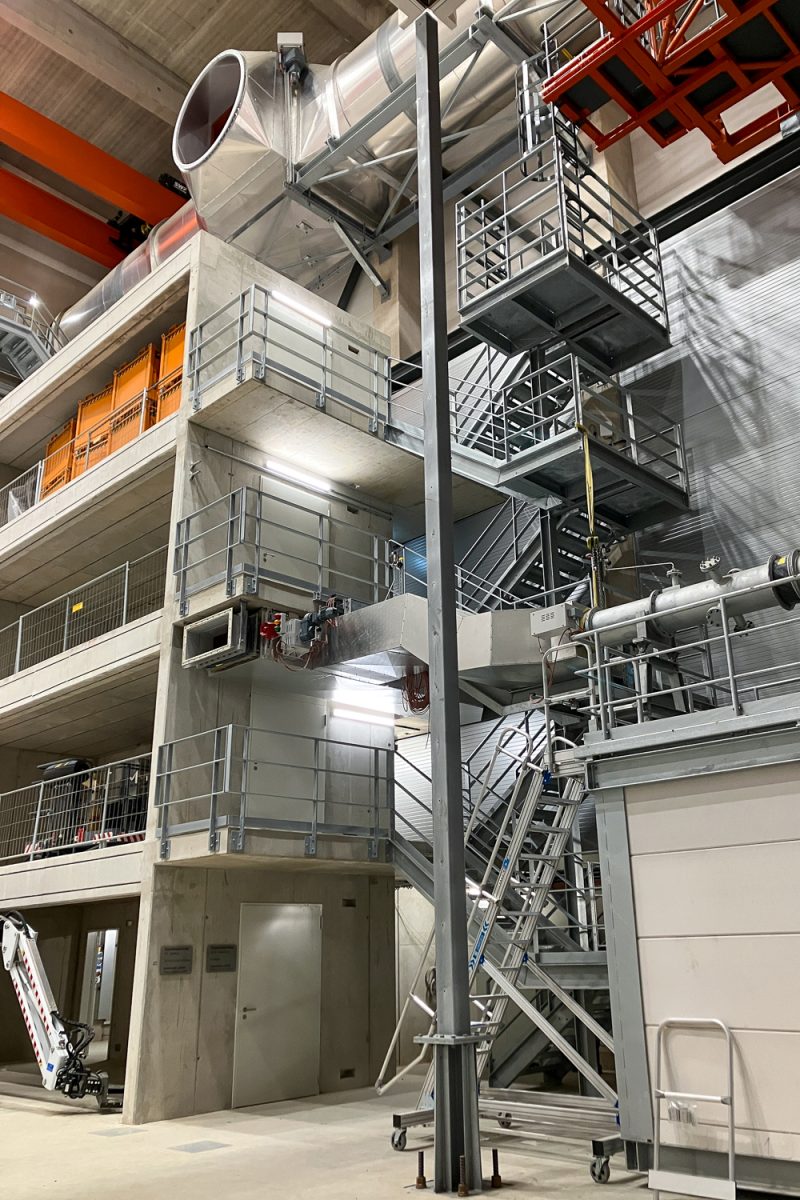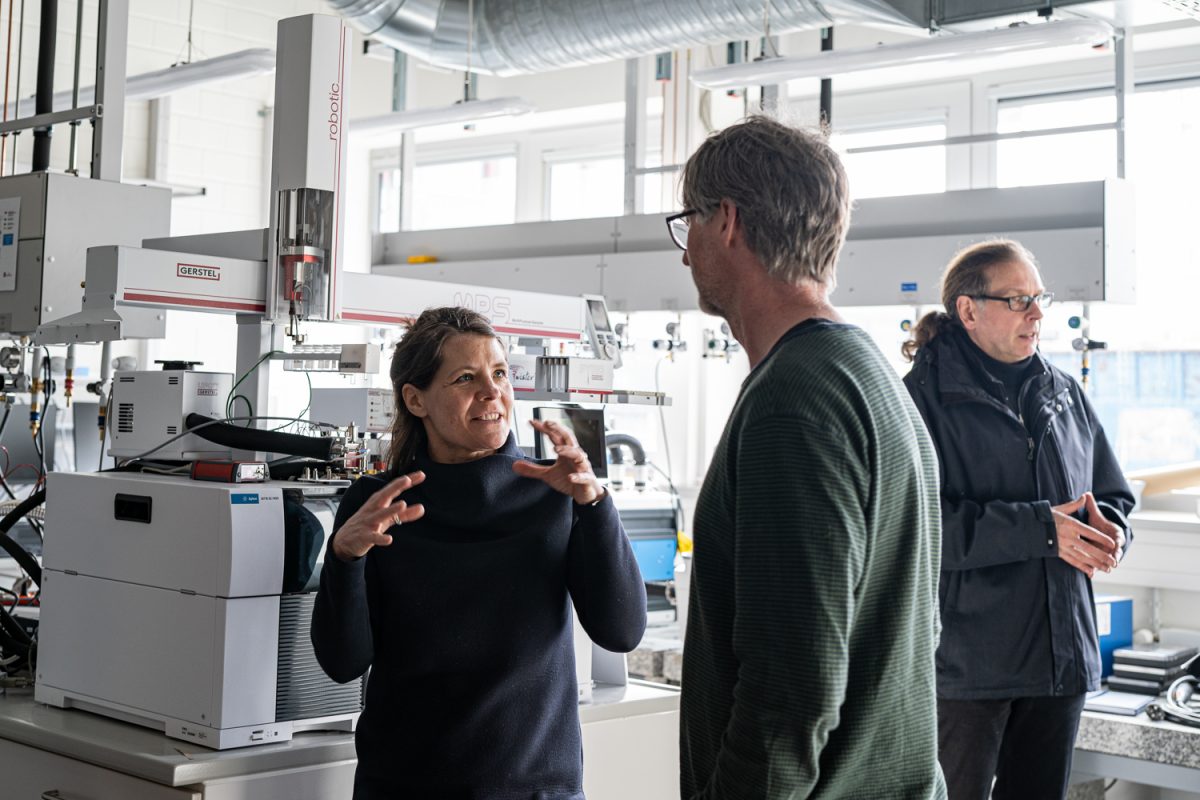Building for fire research ZeBra research building handed over for fire experiments unique in Europe
Behind the dark facade of the new research building on Beethovenstraße at the East Campus of TU Braunschweig are spectacular large-scale research devices for the Centre for Fire Research (ZeBra). They can be used to research the fire behaviour of new types of construction with renewable raw materials and products of the energy transition. Now the key to the ZeBra has been handed over by Facilities Management Division 3 to Professor Jochen Zehfuß from the Institute of Building Materials, Concrete Construction and Fire Safety.
The team from the fire protection department has already been in the building since the final acceptance by the building authorities at the end of last year in order to press ahead with setting up the large-scale research equipment. The first fire tests are already planned for the summer. The official opening of the research building will follow in autumn.
Torsten Markgräfe, Head of Facilities Management, emphasised at the handover of the keys: “The research building is unique. There are no standards or role models that we could fall back on.” The construction of research buildings is a challenge every time. They are planned and implemented tailor-made for the respective research project. This is especially true for the ZeBra, as the technical equipment with the large-scale devices and flue gas cleaning is highly complex and highly demanding.
Challenging research buildings
“Despite the pandemic, energy crisis, material bottlenecks and other challenges, the building was completed on time at the last minute. That was a super team effort,” says Torsten Markgräfe happily and thanks both the user team consisting of Olaf Riese and Bernward Schönteich and his team, which includes Doris Robert and Simon Hartenberger for the structural engineering and Stephan Kufka, Detlev Böthführ and Thomas Joachim for the technical trades. “The realisation of the research building was a highly exciting task, bringing together and implementing the requirements of the scientists with the architectural quality,” describes the project manager of Division 3, Doris Robert.
The research building, which is located in Beethovenstraße on Campus East, is divided into three parts: a two-storey office and measuring room block, a 23-metre-high experimental hall, and the 16-metre-high hall for flue gas cleaning. The construction costs, which are financed 50 per cent each by the federal government and the state, amount to 23.88 million euros. Almost half of the costs, amounting to 10.88 million euros, are for the elaborate large-scale equipment and facilities. The ZeBra research building is the first completion of a new building at TU Braunschweig since the Lower Saxony Ministry of Science and Culture transferred ownership of the building.
Europe-wide lighthouse
Professor Jochen Zehfuß, Head of the Fire Protection Department of the Institute of Building Materials, Concrete Construction and Fire Safety and designated spokesperson of the ZeBra, thanked the Facilities Management for realising the research building. Its planning with the first considerations began back in 2015, followed by application and assessment until approval in 2020 by the Science Council. “Now the ZeBra is almost finished and we can soon start our spectacular fire tests and thus become a Europe-wide lighthouse that lets TU Braunschweig shine,” according to Professor Zehfuß.
The heart of the ZeBra are the two large calorimeters with a facade test stand and for open fire tests, such as of facades, electric vehicles and also buses. With the large-scale devices, which are unique in Europe, fires can be measured and analysed in detail on a real scale. “In the future, answers to unique questions in fire research can be found in the experimental hall with the large-scale equipment,” says Professor Zehfuß.

